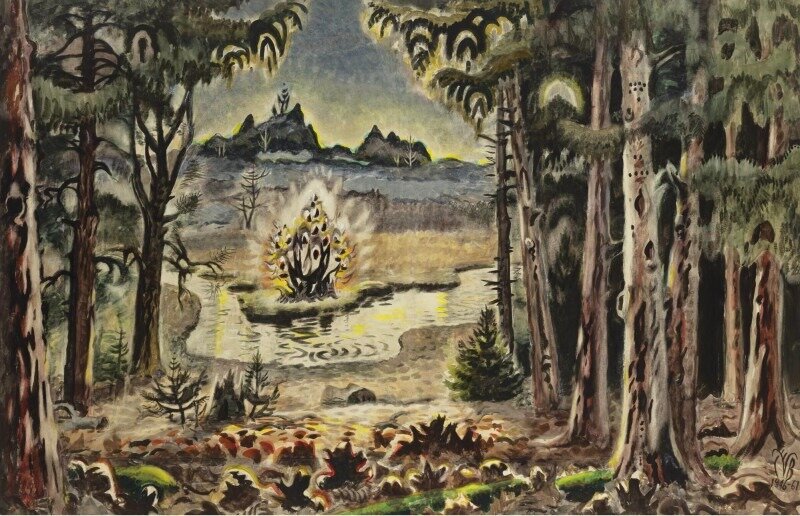Episode 12: Suddenly Subtly Psychedelic - Charles Burchfield - Childhood’s Garden - 1917 / The Coming of Spring 1917- 1943
“Childhood’s Garden” watercolor on paper, 1917.
“The Coming of Spring”, 1917-1943, watercolor on paper.
“Already in my mind I have made the following resolution, but I will now put it down on paper: I hereby dedicate my life and soul to the study and love of nature, with the purpose to bring it before the mass of uninterested public, that they may see and become familiar with the endless number of nature’s beauties, wherein lies my greatest happiness. If I can bring only a few serious-minded people to see how vital nature is, besides being beautiful, I shall be content.”
- Charles Burchfield in a journal entry from May 27th, 1914.
In this week’s episode, Stephanie Dueñas and Russell Shoemaker explore what exactly drove the vibrant works of the prolific artist and writer Charles Burchfield that bookended his career spanning several decades. Starting from his early psychedelic Golden phase, through his Regionalist period, and finally, the works he made toward the end of his career.
His splice-of-life watercolors transcended into multi-sensory and psychedelic landscapes vibrating with the songs of crickets and the buzzing of telephone wires. Stephanie and Russell find out that the answer to the question: Was this Mr. Rodgers - type figure popping LSD in the woods? Or was he that deeply connected to the nature all around him?
Our Art Pantry of the week is Watercolor.
A special thank you to Andrew Leslie who voiced the words by Charles Burchfield. You can check out his poetry here.
The song featured in this episode was ‘Charles Burchfield’ by Rob Lynch and Jonathan Hughes from the album Public / Private Consider supporting their work!
Consider subscribing and leaving us a review on apple podcasts.
“Windy Poplar Wallpaper Design”, Watercolor and gouache on paper, c. 1920s
“Wallpaper Design no. 3”, Watercolor and gouache on paper, c. 1920s
“Wallpaper Design No. 1”, gouache and charcoal on paper, c. 1922 - 1928
"Nightfall" (Wallpaper design) Cretonne, undated; gouache on paper.
"Wallpaper design” gouache on paper, c. 1920s
Symbol from “Convention on Abstract Thought”, 1917.
Symbol from “Convention on Abstract Thought”, 1917.
Symbol from “Convention on Abstract Thought”, 1917.
Symbol from “Convention on Abstract Thought”, 1917.
Symbol from “Convention on Abstract Thought”, 1917.
Symbol from “Convention on Abstract Thought”, 1917.
Symbol from “Convention on Abstract Thought”, 1917.
Symbol from “Convention on Abstract Thought”, 1917.
Symbol from “Convention on Abstract Thought”, 1917.
Symbol from “Convention on Abstract Thought”, 1917.
Whatever it is, the way you tell your story online can make all the difference.
Symbol from “Convention on Abstract Thought”, 1917.
Symbol from “Convention on Abstract Thought”, 1917.
Symbol from “Convention on Abstract Thought”, 1917.
Symbol from “Convention on Abstract Thought”, 1917.
Symbol from “Convention on Abstract Thought”, 1917.
Symbol from “Convention on Abstract Thought”, 1917.
“The Song of the Katydids on August Morning”, watercolor, gouache, chalk, graphite, and pastel on paper, 1917.
“Church Bells Ringing, Rainy Winter Night” watercolor on paper, 1917.
“Sphinx and Milky Way” watercolor, chalk, and crayon on paper, 1946.
“Orion in the winter” watercolor on paper, 1962.
“Dawn in the hemlock woods” watercolor on paper, 1946-1961.
“Oncoming Spring” watercolor on paper, 1954.
“Gateway to September” watercolor on paper, 1946-56.
“The First Hepaticas” watercolor, 1917-18.


































